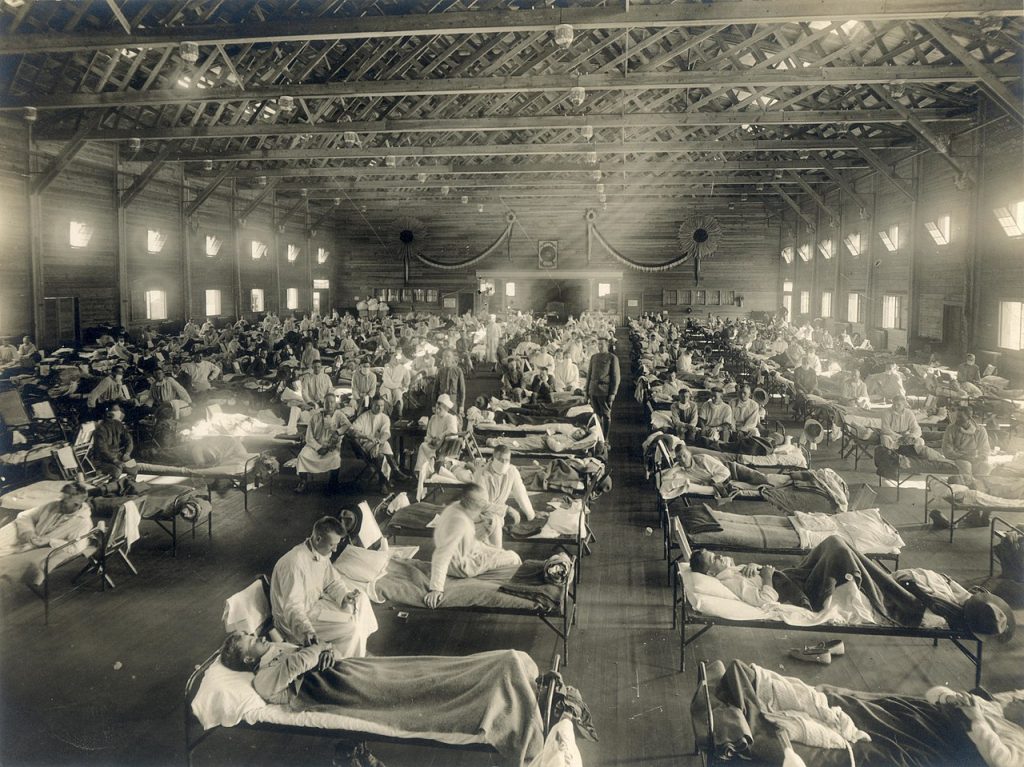
Northeast North Carolina Family History – return of a pandemic…
By: Irene Hampton
Three years ago this month I wrote about the “blue flu” or the Spanish Flu epidemic (named as news coverage of it began in Spain) which was truly a pandemic. Given the worldwide pandemic we are seeing today I thought I would revisit that column. Unlike the regular flu which preys upon the very young and very old, that strain of flu attacked those with strong immune systems, killing the young and healthy by creating a violent reaction to the human immune system. As we age our immune systems weaken which normally makes older people more vulnerable. My mother’s uncle Edmond died December 14th, 1918 in Canada at the age of twenty-five. The 100th anniversary of that world wide disaster got an airing in many articles in 2017 and 2018. Though the disease began to be written about in 1918 it continued for almost two years.
In North Carolina, the “blue death” claimed the lives of over 13,000 during the three separate waves of the disease. Approximately 1 million of North Carolina’s 2.5 million residents caught it, so almost half of the state’s population. It is thought the epidemic in North Carolina began in Wilmington in September of 1918 and spread along the rail lines into the rest of the state. This health crisis put serious strains on hospitals and the fledgling North Carolina public health system. Many health care professionals were already heavily involved in WWI. Across the country the flu was being misdiagnosed and not considered as serious as it was. Other diseases like typhoid fever and tuberculosis were prevalent at the same time. By the time health advisories were given and governments started closing schools, churches and banning public gatherings it was too late.
The increased mobility of WWI soldiers travelling spread the flu to every corner of the world, including the Arctic and remote Pacific islands. Across the world an estimated 500 million people were infected. Depending on the site you check death figures range from 17 to 100 million. The high end represents approximately 3-5% of the world’s population. It did kill over 600,000 people in the United States and in one year the average life expectancy here dropped by 12 years. The origin of the flu was much debated without a definitive answer although different websites suggest France, Austria, Spain, the United States and China (in 1917) as possible ground zero sites. An American Experience program on PBS puts the origin in Kansas at Fort Riley.
The first documented and confirmed case in the United States was that of mess cook, Private Albert Gitchell in Fort Riley, Kansas on March 11th, 1918. Within days hundreds were sick. The speed with which the flu killed was frightening as those infected would often be dead within 48 hours of the onset. Lungs would fill up with fluid, the respiratory system would fail and the skin of those afflicted would turn blue as tissue was starved of oxygen which resulted in the nickname “blue flu” or “blue death.” This first wave disappeared fairly quickly. It was the fall of 1918 when the second wave ravaged the country.
A University of North Carolina president died early in the epidemic and his successor died a month later. So many soldiers were dying in North Carolina that the railroad station near Camp Greene outside of Charlotte had coffins stacked from floor to ceiling. These young men never made the trip to Europe to fight in WWI.
About a third of the world’s population was infected by this pandemic. More people died by the flu of 1918 than any other plague or disease there are statistics for and more died by it than those killed during WWI. My mother’s uncle was among 50,000 Canadians that died. Such pandemics have and will continue to be a part of our family histories. I am including a few websites that I visited if you are interested in further reading.
www.ncpedia.org/history/health/influenza
www.archives.gov/exhibits/influenza-epidemic
(This one has lots of differing information on origin.)
To read more of Irene’s articles Click Here
